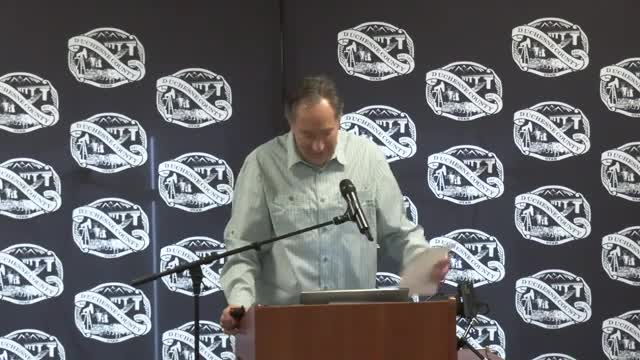Utah air-quality officials say EPA rejected second attainment extension, moving Uinta Basin to moderate nonattainment
March 23, 2025 | Uintah Basin Revitalization Fund Board, Boards and Commissions, Organizations, Utah Executive Branch, Utah
This article was created by AI summarizing key points discussed. AI makes mistakes, so for full details and context, please refer to the video of the full meeting. Please report any errors so we can fix them. Report an error »

Sheila Vance, air-quality program staff with the Utah Division of Air Quality, updated the Uinta Basin Collaborative on the basin’s ozone monitoring and regulatory status, saying that U.S. Environmental Protection Agency action removed a previously granted attainment extension and elevated the basin’s classification to moderate nonattainment.
Vance said the state and Duchesne County have filed a request for reconsideration and a stay of EPA’s decision and were awaiting a judicial ruling. She said the division paused active work on a moderate State Implementation Plan (SIP) while EPA reconsiders the decision.
Vance explained the regulatory metrics used to measure ozone: regulators use a monitor’s fourth-highest daily 8-hour ozone value and a three-year average of that “fourth high” (the design value) to determine attainment against the 70 parts-per-billion standard. "We were bumped up to a moderate non attainment," Vance said, describing EPA’s final action.
Utah State University researcher Seth Lyman, facilitator of the Uinta Basin Ozone Working Group, reviewed monitoring data from the recent winter. He said the basin did not record an 8-hour average exceedance of the 70 ppb standard during the most recent winter but that some research monitors and certain sites saw late-January increases that approached the standard. "We didn't go over the standard," Lyman said of the winter information, noting how a single high year can raise the three-year design value.
Vance also discussed EPA’s 2024 oil-and-gas methane rulemaking. She said federal rules for new and recently modified sources took effect in May 2024, and EPA also required states to address existing sources; states must develop plans that meet EPA guidelines. Vance said the division was preparing draft rules and anticipates presenting proposed regulations to the state board, with a target to have required material to EPA by 2026, but that timing could shift while federal reconsideration and related litigation proceed.
Meeting participants asked whether changes in federal leadership could affect ozone standards; Vance noted the EPA periodically reconsiders standards (the ozone review cycle noted as 2025 in the discussion) and that the agency had many regulatory reviews underway.
Ending: Vance said regulators would continue to share updates and that the division would await legal outcomes before resuming certain rulemaking steps.
Vance said the state and Duchesne County have filed a request for reconsideration and a stay of EPA’s decision and were awaiting a judicial ruling. She said the division paused active work on a moderate State Implementation Plan (SIP) while EPA reconsiders the decision.
Vance explained the regulatory metrics used to measure ozone: regulators use a monitor’s fourth-highest daily 8-hour ozone value and a three-year average of that “fourth high” (the design value) to determine attainment against the 70 parts-per-billion standard. "We were bumped up to a moderate non attainment," Vance said, describing EPA’s final action.
Utah State University researcher Seth Lyman, facilitator of the Uinta Basin Ozone Working Group, reviewed monitoring data from the recent winter. He said the basin did not record an 8-hour average exceedance of the 70 ppb standard during the most recent winter but that some research monitors and certain sites saw late-January increases that approached the standard. "We didn't go over the standard," Lyman said of the winter information, noting how a single high year can raise the three-year design value.
Vance also discussed EPA’s 2024 oil-and-gas methane rulemaking. She said federal rules for new and recently modified sources took effect in May 2024, and EPA also required states to address existing sources; states must develop plans that meet EPA guidelines. Vance said the division was preparing draft rules and anticipates presenting proposed regulations to the state board, with a target to have required material to EPA by 2026, but that timing could shift while federal reconsideration and related litigation proceed.
Meeting participants asked whether changes in federal leadership could affect ozone standards; Vance noted the EPA periodically reconsiders standards (the ozone review cycle noted as 2025 in the discussion) and that the agency had many regulatory reviews underway.
Ending: Vance said regulators would continue to share updates and that the division would await legal outcomes before resuming certain rulemaking steps.
View full meeting
This article is based on a recent meeting—watch the full video and explore the complete transcript for deeper insights into the discussion.
View full meeting

